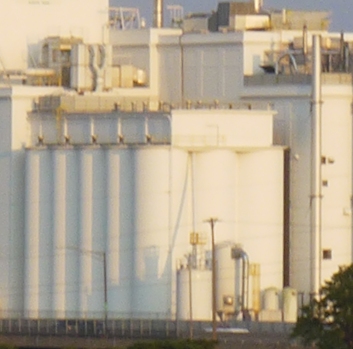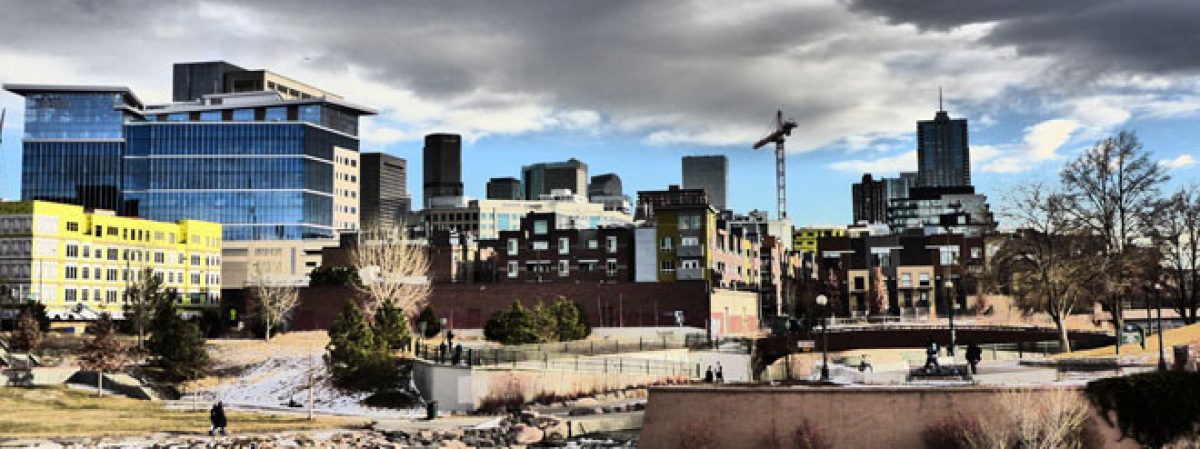
In an era when any musician, regardless of talent or ability, can release whatever, figuratively speaking, falls out of their head with no quality control impeding its release, Meet the Giant is a bit of an anomaly. The rock trio formed in 2009 and released its self-titled debut album on May 29, 2018. Most bands wouldn’t incubate for that long in any way. “Our first album from the beginning is basically ten years,” says bassist/vocalist Micaela Naranjo. “But we’re not on anybody else’s agenda. It’s tempting to fall into the traps of doing a genre based approach or marketing to people. But it’s not for us.”
“We were of the mindset of let’s just make music for us,” says guitarist Erin Cisney. “Keep it in the basement.”
The group germinated initially when drummer Lawrence Snell, whose shoegaze-rimmed Americana band Colder Than Fargo had recently split, talked to his friend Cisney about jamming for fun. The two would get together from 1 to 3 p.m. with electronics rigs set up facing opposite walls. In Colder Than Fargo Snell had triggered electronics as well as played drums and Cisney had extensive production work under his belt having worked for a label in England that did reissues and released albums by classic bands in their later era in which, say, the lineup might only include the original bass player. After several sessions jamming and creating some of the threads that would become Meet the Giant, Cisney mentioned he had a friend who was a bass player that might be interested in coming in to play. Naranjo heard some of the recordings, liked them and the three formed a band with no stated or unstated intention of making music to share with anyone else.

The English connection was something Cisney and Snell had in common. Cisney was born in Salida, Colorado but grew up in Littleton and had played in local bands like Whirling Dervish and Vena Cava before getting a production job overseas. Snell grew up near Leicester, England in a working class family but one that had an appreciation for music. Snell’s father was not into the Rolling Stones so much as American songwriters like Buddy Holly, Waylon Jennings and Johnny Cash. Though Snell’s family sold potatoes at nearby music festivals including one memorable year at Reading when the 1986 headliners were Killing Joke, Saxon and Hawkwind.
“My dad said the first night is going to be the punk rockers, the second night is going to be heavy metal and we’re going to have trouble,” recalls Snell. “The third night it’s going to be all peace and love. But people were on acid and they robbed my mom and dad’s potato wagon and lit the speakers on fire.”
Soon after, though, Snell was taken with American music in the form of hip-hop and Public Enemy and the art pop funk of Prince. It was a heady time in the late 80s and early 90s and Snell found himself swept up in the momentum of the cross-Atlantic musical co-influence as New Order borrowed hip-hop production techniques and the Manchester “Baggy” scene synthesized the aesthetics of dance music and post-punk. That music was in all the pubs on jukeboxes in a way that might seem odd to Americans. Britpop became almost ubiquitous. “ Everybody had that first Oasis album in their car,” quips Snell. “:Even your grandma had a Liam Gallagher haircut.” That monocultural wave is what made Snell appreciate America’s proclivity for regional scenes that weren’t so closely connected. Especially at that time when not all music and culture was so easily accessible as it is now.
Colorado in the 80s and 90s seemed pretty far removed from centers of culture in general. But as with many places so relatively isolated, idiosyncratic creative endeavors develop in spite of having not much support from the immediate culture and government. Cisney played in a band starting in high school called Guru Picnic that played pep rallies and football games. But after a few months that project dissolved and Cisney formed Wasteband, which recorded an album in 1989 at Freewheelin’ Recording Studio where Denver New Wave band The Corvairs had recorded its five song demo a decade prior.
It was during his college years in Boulder that Cisney played with Platypus and shared stages with the likes of Fat Mama and Chief Broom. Boulder funk/jam/rock band The Motet was just starting up. Soon enough Cisney joined Vena Cava and his circle of friend bands would play The Fox and come down to Denver to play The Bluebird thinking it was a common occurrence within the reach of any band. But he was soon disabused of such notions.
“One show it was half full and we thought that was a shitty gig,” says Cisney. “I’ve never had a gig like that since.”
Naranjo was later in life getting into bands than many people. Coming in and out of town during colllege, Naranjo became involved in what was called the “Broken Mic Scene” which included the venues The Bank, The Park Tavern and The Flying Dog. Naranjo, who grew up in a musical family but never considered themself talented enough to be in the music scene, joined The Late Jack Redell and played with Garrett Carlin, now in art noise rock band Jane Doe. Naranjo found playing with the band comfortable and that gig led to playing in other bands like Fallout Orphan, Legendary Beep Beeps and Penelope Project. “For me being in the local scene is more about people who have the same malfunction you do,” says Naranjo.
Around 2015, Meet the Giant had written and recorded various songs occasionally sharing them with close friends and the trio felt some momentum in the band that inspired an interest in playing a debut show. The proper environment for doing so came with two shows at Rocky Mountain Sound Garden, a now defunct recording studio and rehearsal space. It seemed safer to do that more DIY type of show before heading back into the waters of bar and small venue shows that is the common experience of most bands in any city. The opportunity to break that egg was a barbecue show on a Sunday at Larimer Lounge where Meet the Giant played after a jug band and a Christian worship band.
“I like getting on a bill like that to get exposed to different sides of the scene but sometimes its a shitshow,” says Naranjo. “We chased everyone out of the bar quickly.”
But Meet the Giant persevered and found appreciative audiences in the metal scene because its own sound has a bit of grit and heaviness to it despite being atmospheric, melancholic music. Then again, bands like Kylesa, True Widow, Emma Ruth Rundle, Myrkur and Chelsea Wolfe have a crossover appeal in that way. In fact, Bart McCrorey of Throttlebomb, offered to do some recording for the band at his Crash Pad studio where he is best known for recording hard rock, punk and metal records including the fantastic 2017 Weaponizer album Lawless Age.
“The metalheads were good to us on the scene,” comments Snell. “To me they’re the last people that are genuinely into music. It’s like ska, reggae, two-tone and punk. Different music but the same ideals.”

For the new record, the band recorded two tracks with McCrorey and others with Danny Ke at Orchid Studios and Dave Schleitwiler at Sunnyside Recording Studio. But the whole album was mastered by Brad Smalling who assembled the various recordings into a sonically cohesive whole at Evergroove Studio, the place where enigmatic, experimental, instrumental band Itchy-O has been recording of late. And it is with Smalling in a studio in Taos, New Mexico that Meet the Giant recently recorded its follow-up album prior to heading out on its first tour in spring 2018 spanning June 3 through June 8.
After years of playing in bands and spending over half a decade developing its music, Meet the Giant has no illusions of rock stardom in the making or hitting it big in the local scene either. Its dark, lush, sometimes scrappy music doesn’t fit in an easily marketable genre box. It reflects a hybrid rock and electronic aesthetic that happened naturally given the band’s musical interests going in. In fact, the group has an electronic side called Shadow of the Giant that is all electronic that it may someday unveil.
There was a time, not so long ago, when the rock and electronic blend in the dark, atmospheric way that Meet the Giant does so well was out of style in a climate where entirely too much dry earnestness. Modern takes on classic rock, garage rock, garage punk and pretty but not really mind-altering psych rock seemed fairly trendy not just in Denver but nationally. Odd for Denver which long had a tradition of moody, brooding, majestic, heady bands. Given the growing popularity of bands like Black Marble, Drab Majesty and Wye Oak those tides have been turning for a few years and Meet the Giant may be emerging in the right climate for its sound.
“We’re really into the Bristol scene and common elements and retrospectively there’s probably this sort of emotional expression that’s consistent in the music that we like,” says Naranjo.
“What we’re writing is dark, for the most part. There’s an introspection and tenderness there that we all like,” says Cisney. “The spectrum for us is typically on the sadder, darker side of things but we have some throw your fists in the air rockers.”
“We’ve been together nine years,” says Snell. “We’ve been through deaths, break-ups and a myriad of stuff and the thing that has kept us together is the music, even though that’s a bit of a cliché.”
Meet the Giant’s debut album is available digitally through the usual outlets including Bandcamp, iTunes, Spotify, Google Play and Amazon. The band will have a vinyl release show on August 10, 2018 at Syntax Physic Opera where it will celebrate the occasion sharing the stage with Church Fire and The Patient Zeros.



You must be logged in to post a comment.